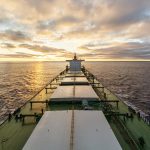In our previous blog, we covered the Great Barrier Reef in Australia, the Raja Ampat in Indonesia, The Red Sea Coral Reefs and the Coral Reefs of Maldives. Today we will be informing you about the Meso-American Reef and the Andaman and Nicobar Coral Reefs.
The beautiful Coral Reefs are nature’s gift to mankind in many ways. Not only are they beautiful and attract tourists and revenue but they also maintain the ecological balance for the marine life to sustain and grow. In the past few years, these marine habitats have been facing acute threat from ships, marine vessels, and effects of marine pollution. Corals are an excellent natural control for erosion since they grow across the sea bed. They help stabilize and prevent large swathes of land from shifting.
The Andaman Sea is approximately 750 miles or 1200 km long and is 647 km wide. It covers a surface area of 797,000 square kilometres and has an average depth of 1096 metres. Due to underwater valleys, its depth exceeds in some places. The maximum depth of the sea is around 4,198 m.
The Andaman Sea has several marine species that are commercially valued. However, uncontrolled and unsustainable fishing practices have threatened the lives and livelihoods of communities and the fragile ecosystem’s sustainability.
It has led to the reduction of fish populations in the past. Hence, to protect the Andaman Sea’s flora and fauna, commercial fishing on a large scale was banned in the Andaman Sea.
The administrations of India, Thailand and Myanmar have put several regulations and management steps in place for checking the same. For instance, there are strict restrictions on using particular types of fishing gear; there is a practice of seasonal closing for some species and a cap on the quantity of fish that can be caught in some areas of the sea. Some regions are categorised as marine protected zones where fishing is prohibited.
Several incidents in the past, involving both cruise and cargo vessels have caused great threat to the coral reefs by hitting and grounding the Andaman and Nicobar Islands for the largest collection of reefs in Indian waters.
Cruise ships are often found flushing their enormous amount of sewage and food waste and oily bilge water as a suspension of insoluble particles, into the ocean.
Moving on to the Meso-American Reef, it lies within the Caribbean Sea and touches the coasts of Mexico, Belize, Guatemala and Honduras. It contains the largest barrier reef in the Western Hemisphere, stretching nearly 700 miles from the northern tip of the Yucatan Peninsula down through the Honduran Bay Islands. Dazzling arrays of different types of coral form this underwater wilderness, and provide homes and food to hundreds of fish species, marine turtles, and sharks. Along the shores, mangroves provide habitat for fish and shorebirds as well as protect coastal areas from the damage associated with hurricanes and strong storms.
Coastal development, unregulated tourism, pollution and overfishing threaten the reef system. The Central America with coastal communities on the ground and in the water to reduce the reef’s vulnerability to these ongoing threats. Shipping industry, which is wholly accountable for the marine and cargo transportation, is one of the potent sources for pollution at sea. With over 70% water covering our planet, marine industry is booming each passing day. With such rapid industrial growth the marine ecological system is bound to get perturbed by unwanted issues such as those of the marine wastes and effects of marine pollution. Marine waste and the associated garbage have been proclaimed as being majorly responsible in polluting the world’s oceans including the Meso-American Reef and adversely cause irreversible harm to marine life.
With this we conclude the blog series. We hope to bring more awareness and sensitivity towards nature and the habitat of marine flora and fauna and avoid endangering them for our selfish human needs.






